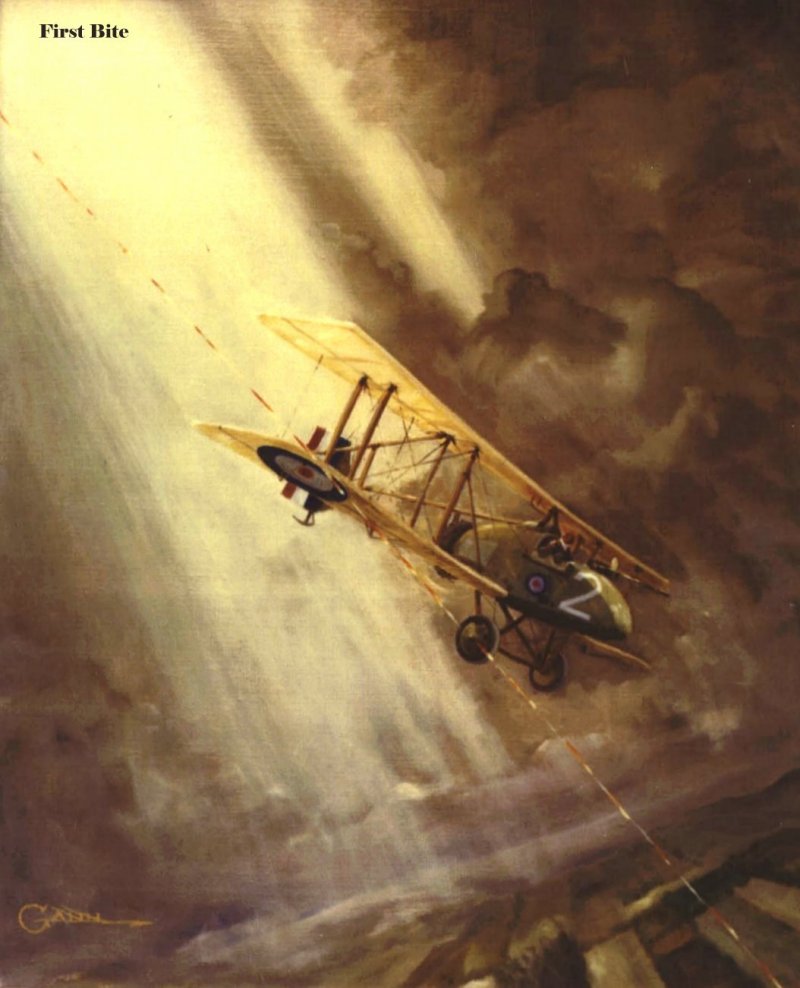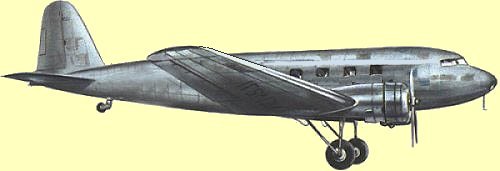Ernest K. Gann
Today, Ernest Gann. The University of Houston's College of Engineering presents this series about the machines that make our civilization run, and the people whose ingenuity created them.
People ask where I get ideas for this program. Well, the issue isn't ideas; it's involvement. After I ran into three different Spitfires at three air museums, all within two weeks, I began seeing Spitfires in my sleep. I clearly had to disgorge myself of Spitfires so I did a program on them, and I could then sleep again.
Now writer Ernest Gann has been working upon my subconscious in just that way. Born in 1910, Gann was raised in my own St. Paul. Among his huge output of fine books are The High and the Mighty, Twilight for the Gods, Island in the Sky, The Aviator, and Soldier of Fortune -- all of which were made into major movies.

When I visited the 1940 Air Terminal Museum here in Houston, they had a copy of his book, Fate is the Hunter. (The movie version of that one starred Glenn Ford and Suzanne Pleshette.) When he was a teenager, Gann knew my mother, so I bought the book.
Now that I've read Fate is the Hunter, it's clear why the museum features it. It's an autobiography of Gann's years as an airline pilot during the 1930s and early '40s, and of his war years with the Air Transport Command.
What a terrifyingly dangerous business commercial flying was in the embryonic years of the airlines! The book is one brush with death after another. He opens with a remarkable scene: He drifts to fifty feet above his stipulated altitude of five thousand feet. It's an ignorable error, but, after a while (and only on a rather compulsive whim) he corrects it. Moments later, an oncoming plane, far off its own course, passes just fifty feet over his head.
So Gann is alive, when another perfectly able pilot might be dead. The book follows down that rather fatalistic road. Hundreds of early airline pilots died -- many better than he. Fate, he believes, is the whimsical hunter who takes them down at random.
He writes with the rhythm of Herman Melville. You're drawn into the inner world of the pilot's cockpit -- a place that feels so removed and safe that peril always arrives unexpected.
Yet something tells you this remarkable person made his own fate. A distinguished sailor, as well as a pilot, he was also a painter and photographer. And he began in theater. As a teenager, he meant to be a moviemaker. We have a family photo that he took in 1925, when he was just learning one of his many skills. It shows my mother holding my older brother on her lap.
Only later did Gann become, first a barnstormer, then a pioneer airline pilot. He built an incredible many-dimensioned life. He painted himself as fate's object, a heritor of better luck than his comrades. But I sense a dimension of modesty in that.
Early flight was dangerous beyond our comprehension and fate surely did hunt those flyers. Still, I doubt that we're such easy prey. It was more than just luck that Gann lived to the age of 81 on San Juan Island in Puget Sound -- surrounded by the boats and paintings, technological and natural beauty that he'd always loved.
I'm John Lienhard, at the University of Houston, where we're interested in the way inventive minds work.
E. K. Gann, Fate is the Hunter. New York: Simon & Schuster, 1986.
For more of Gann's books, see Amazon.com
For more on Gann, see: https://en.wikipedia.org/wiki/Ernest_K._Gann/
I am most grateful to Gann's daughter, Polly Gann Wrench, of Houston, TX, and to James H. Lienhard of Portland, Oregon, for their counsel.
Polly Wrench has graciously provided several photos of Gann (including the one above) and one of his paintings.

Gann as a member of the Air Transport Command, during WW-II.

Portrait of Gann taken in the brief period during which he flew as a Captain with Matson Airlines.

Gann in the rigging of his brigantine, Albatros. His daughter quotes him as follows: You live with a ship a few years and cuss her enough and all of a sudden one day you wake up and discover you're in love.

Gann in a Great Lakes Trainer, biplane, when he was 25.

A Gann painting titled First Bite shows a primitive Airco DH-2 which was used by the British early in WW-I. It is shown under attack by an unseen enemy. The diagonal line represents a stream of tracer bullets.

The Douglas DC-2, the flawed predecessor of the DC-3. This was the airplane in which Ernest Gann learned the work of airline flying.
On a personal note: My mother, 9 years Gann's senior, knew the young Ernie Gann. While he was a high school student, learning movie making, she agreed to be his movie subject -- reading to her young son, my older brother. Click here to see an old photo of Gann, kneeling, with his fellow students, shooting my mother and brother ca. 1927/8.